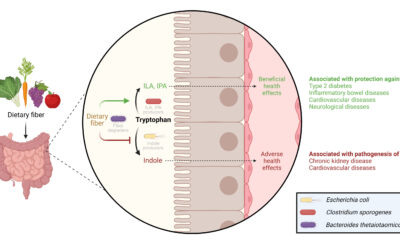Health
The new public health crisis

Unhappy young woman feels lonely, abandoned in the crowd, suffers from lack of communication. Angry girl … [+]
There is a pandemic going on. No, it has nothing to do with viruses or bacteria, or any other pathogen. This is a silent pandemic – the pandemic of loneliness. However, the health consequences are just as serious: social isolation has a greater impact on mortality than Smoking 15 cigarettes a day or drinking six alcoholic drinks a day. Choose your poison.
It is therefore no surprise that the World Health Organization has declared loneliness is a global threat to public health. This follows in the footsteps of US Surgeon General, Dr. Vivek Murthy, to alarm about the damaging effects of social isolation and a lack of meaningful connections.
What do we know about this silent pandemic and what can we do about it?
Older adults are especially lonely
One of the most important findings of research about loneliness is that older population groups are especially vulnerable to feeling neglected and alone. The experience of loneliness throughout life tends to follow a U-shaped curve; it is high during our adolescent years as we struggle with life transitions and identity questions; it declines somewhat during middle adulthood as we begin to build families and strengthen social networks (whether at work or through contact with other parents), and then it increases sharply again as we get older.
While this staggering increase in loneliness as we age has several causes, one stands out as the main culprit: a decrease in mobility. The older we get, the more difficult it becomes to perform routine, everyday tasks such as climbing stairs or carrying groceries. Often, these activities are eventually stopped altogether, leaving older adults in a state of physical inactivity that compromises their ability to meet and connect with others. They become ‘prisoners’ in their own bodies.
Hearing loss is another major problem. Language is a gateway to community; more often than not we get to know each other through conversations. Speaking helps bridge gaps and create bonds. But when a person’s hearing is compromised, one side of the equation falls apart: conversation is as much about listening as it is about talking. Difficulties with hearing form a barrier to communication, which increases the risk of someone feeling increasingly lonely. This is reflected by research on the subject, which shows that hearing loss increases the risk of social isolation by up to 28%. And this is not an abstract concern: until two-thirds of the elderly experience hearing loss, yet only about 10 to 30% use hearing aids.
Although the magnitude of the loneliness epidemic varies from country to country, the U-shaped trajectory represents a global trend. Whether in Britain, Germany or Australia, most people start to feel increasingly lonely as they get older. But it should be noted that some groups are at greater risk of loneliness than others, including women, people with lower education and those with lower incomes.
Middle-aged adults are not immune
Although loneliness is highest among older adults, it is also becoming a problem among middle-aged adults; the usual U-shaped trajectory may not last much longer. Recent research suggests that this is especially true for middle-aged Americans, who are consistently lonelier than their European counterparts.
By following 53,000 middle-aged adults from the US and 13 European countries for a total of 18 years, the researchers were able to conclude that Americans score highest when it comes to feelings of social isolation. Those in the Mediterranean and England weren’t far behind, while middle-aged adults in continental and northern Europe – think Germany, Sweden, Norway, etc. – reported the lowest levels of loneliness.
Why Americans are more susceptible to loneliness was not addressed by the study, but by the authors take a chance“We think the loneliness Americans report compared to comparable countries reflects limited social safety nets and cultural norms that prioritize individualism over community.” Social isolation is closely linked to this povertyand the US is one expert on poverty; in fact, the US has one of the highest poverty rates all OECD countries.
Another plausible explanation is America’s car-centric culture, which pushes aside public spaces and parks in favor of endless parking lots, colossal freeways and suburban developments. In a press release for a study on walkable neighborhoods, James F. Sallis, Ph.D., Distinguished Professor at the Herbert Wertheim School of Public Health, notes: “U.S. transportation and land use policies have heavily prioritized automobile traffic and suburban development, so Millions of Americans live in neighborhoods where they have to drive everywhere, usually alone, and have little or no chance to interact with their neighbors.”
The built environment in which we live determines our interactions. When that environment focuses primarily on car traffic, we end up with unwalkable cities and a lack of public space, both of which hinder opportunities for social interaction and the development of deep community bonds.
How harmful is loneliness really?
Okay, so loneliness is increasing across all age groups. That’s not great, but how concerned should we really be? In addition to the mental health issues associated with prolonged periods of social isolation, there are also numerous risks to physical well-being.
First, socially isolated people find themselves in a 25% increased risk of cancer-related death and a 32% increased risk of stroke. The risk of heart disease also increases by as much as 29%. And as for dementia: people who are socially isolated are one and a half times more likely to develop problems than people who report having a rich social life.
Another study found that among patients with heart failure, those who described themselves as very lonely were three times more likely to die than their non-lonely counterparts. They also had a 68% increased risk of being hospitalized in a year.
It is clear that loneliness and social isolation are very closely linked to poor health outcomes. But as always, separating causality from correlation is a messy business; it is not entirely clear whether we can say that loneliness is cause these health problems. It may be that people with certain health conditions or disabilities are more prone to loneliness in the first place, in which case the two simply overlap. Yet it cannot be denied that social isolation goes hand in hand with an increased mortality risk. Even though it cannot be said to cause any health problems, it is a flash of light in the night sky that alerts us that someone is in dire need of help. We have to start paying attention.
Implications
We need social interaction just like we need to eat, and just as hunger is a signal that we are missing something, so is loneliness. It’s our brain’s way of telling us that there is a deep need that is not being met. In fact, the two even activate the the same regions of the brain – when we are lonely, we are ‘starved’ of meaningful contact. However, the need for contact is increasingly unsatisfied. And the risks associated with prolonged social isolation are starting to emerge. We are in the middle of a new pandemic, only this one is being silently confirmed.
As with any health crisis, the first step is to acknowledge what is happening. Until we admit that this is an urgent issue that needs attention, nothing will change. The second step is to recognize that this is a systemic problem, meaning that any long-term solutions will be at the level of policy, not individual interventions. When London eradicated cholera in the late 19th century, it was thanks changes in waste management, not because of a new drug. If we want to tackle the loneliness pandemic, we need a similar approach. After all, public health issues are social issues, and vice versa.













